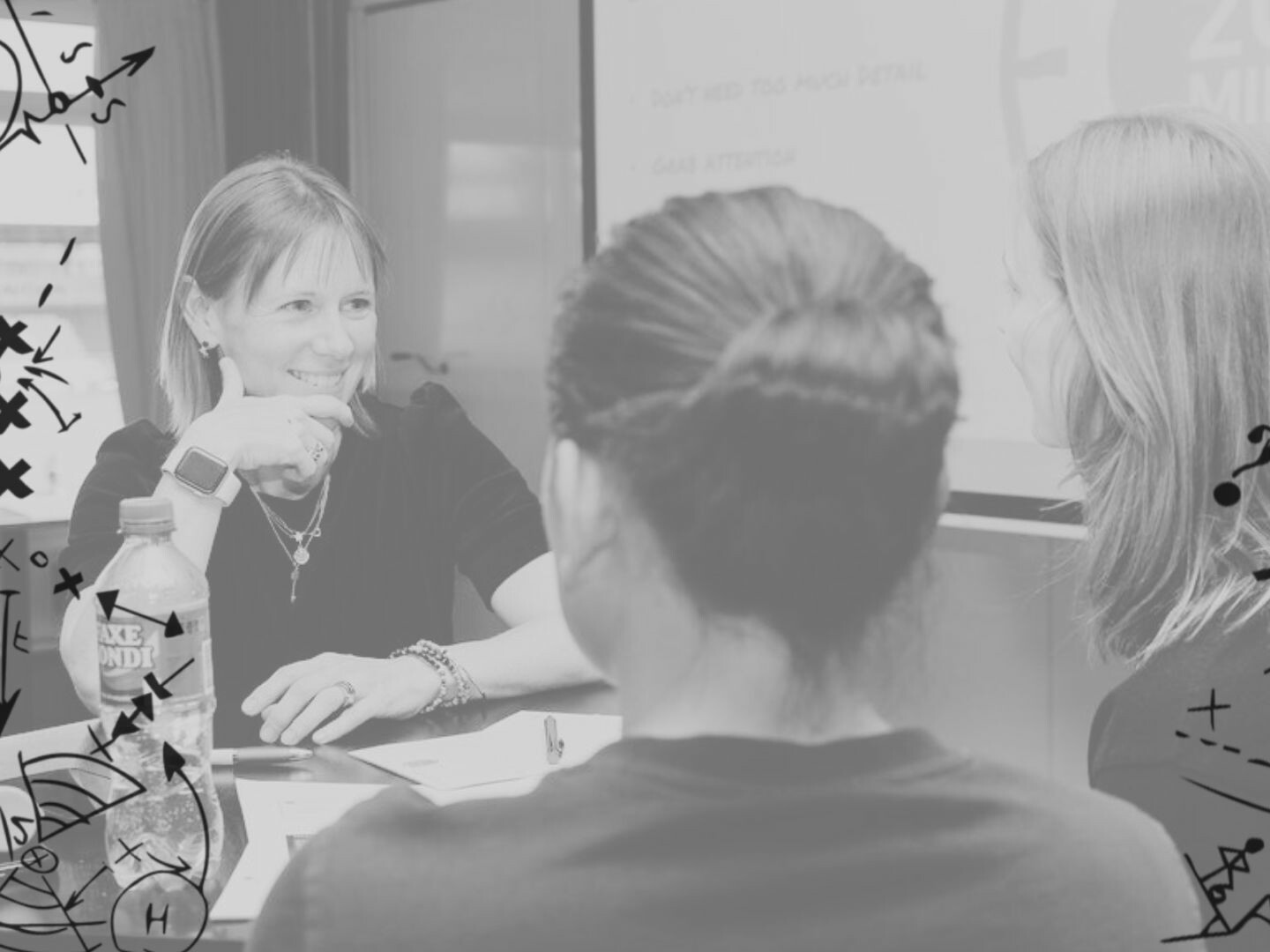Anyone who has spent time with us as a candidate or client will know we believe any hire to be 50% culture, 50% capabilities. That we see shared (or conflicting) values, beliefs, mindset and behaviours to be as much of an indication of how a person will fit into a team, contribute, and thrive as their technical ability to perform a specific role does. Which is why we visit all our clients in the flesh before taking on briefs. And why our partner-led model sees those leading our briefs conduct all their interviews themselves.
But, we also believe it is entirely possible to interview, and be interviewed, online and still get a great sense of who people are and how you may work together. In fact, some of the bigger organisations we have worked with purposely conduct the majority of their interviews online even if a face-to-face meet is possible, in order to ensure parity across sessions and given much of their day-to-day business is conducted this way.
The main difference between meeting in person and meeting online lies in the nuance, and how you go about creating connection and an environment all feel comfortable in and in which personalities can shine through.
And as with most things, success comes down to preparation, timing and paying attention to the small things – which are never that small at all.
Preparing for an Online Interview
In the same way face-to-face interview processes are built to create a journey, and an impression, over time, so should virtual processes be. Which is why we would suggest using different media and different length conversations for different stages – just as you may hold the initial chemistry meeting in an informal setting like a coffee shop before a more formal panel session or presentation. Think about what the purpose of the meeting is – whichever side of the process you are on – and therefore how you should act, dress and behave.
It’s also why we’d say set up a call first: it’s harder to engage with people initially online if you have never met so we would start the conversation with a phone call which is more natural to most people and avoids any issues with technology, where to look etc. We’d make this brief and use it as a way to build chemistry and rapport. Given what we said above about culture, this provides both sides with a good opportunity to see if there could be a team fit.
Because it’s harder to get to know someone online, when non-verbal communication is at best cut short, and at worst, frozen for seconds at a time, we would suggest more, shorter interviews than a standard process, and to intersperse video with phone. Not being able to see each other allows people to be more candid: it’s the same principle as sitting side-by-side in a meeting as opposed to opposite each other and removes the parent / child dynamic – which is why cars and trains are such good places to have hard conversations, so alternate video and phone calls could work well.
When you get to video interviewing, the biggest barrier, and often cause of nerves, is the technology so we would look to remove that hurdle as early as possible:
- If there is a chance to ask the candidate what their preferred technology is and use it, do, as it will put them at ease and make them more natural – likewise if that’s you, and you have one that works best for you, why not say?
- If not or the client has a system you need to use, test it first by having a practice between the candidate and someone at the client organisation the day before to ensure the audio and visual work and that there isn’t a firewall issue
- Have a back-up plan in the meeting invite: who will call who after how long if it isn’t working and with relevant phone numbers shared (you will need approval from both sides for GDPR purposes!)
Bizarrely, the current lockdowns means that in a number of cases more people are able to be present in interviews than might have been the case previously due to logistics and diaries. Technology is brilliant for this and you can have many people ‘in the room’ as well as conducting presentations online via screen share as if you would in a meeting. If you know what you are doing. Again, a good panel interview comes down to prep and ensuring all know the rules of engagement.
- As before, it’s worth testing the ability to present live before the meeting and ensuring you are sharing only what you want to and not your full screen
- If you have more than two of you in the meeting, it’s important to have consistency of all having video on, or not, otherwise it is hard to engage
- Without getting too formal, it’s also good to have two lead participants when there are a number in attendance: the candidate and a main interviewer who can chair the meeting and be most likely to respond to give a smoother flow and ensure it starts well
- If there are a number of you, it’s worth getting people to mute their audio if they are not speaking or someone is presenting, although this can be a bit clunky. Likewise, if the connection gets sticky, all switch to audio once you’ve met each other
- Getting people who wish to speak next to raise a finger is a great way to ensure all know who is going to say something next and feels relatively natural relatively quickly
Timing for Online Interviews
- Think about what time you ask people to meet, and what else might be going on in their house at that time – the traditional early and late slots may be a lot harder when there are different age groups in the vicinity
- Join the call early – most technology will keep those not hosting the session in the lobby until its ready to start, but better to sit there alone than have everyone arriving late as they realise they haven’t downloaded the right app
- Set expectations at the start of the call: it’s harder to end video meetings as the natural cues we might use in a normal setting don’t work so it’s best if you can agree a suggested time length, what you might wish to cover and acknowledge that there may be technical blips upfront. As well as allowing proper time for questions
- If you are working with a headhunter they should be well versed in video interviewing and able to coach both the interviewer and interviewee on technique: generally you need to wait an extra beat before answering the person speaking to ensure they have finished – and two if the anyone in the interview is not speaking their native language
Don’t Forget …
- Ensure the face of the person you are speaking with is positioned directly below the camera on your screen so you can look them in the eye
- Think about the environment and what’s behind you – dress the room appropriately and brand the tech if you can. A number of platforms let you blur the background
- Don’t use notes or prompts that you wouldn’t in a face-to-face interview as this can be seen – and reading breaks the flow of conversation
- Likewise, it should go without saying but don’t send other interviewers or people emails or texts during the call to discuss what is happening – however subtle you think you are being, it’s fairly obvious!
- If you are screen sharing, make sure your alerts and emails are turned off so they don’t pop up
- At the moment, some popular platforms are crashing so it may be better to invest a small amount in a lesser known but equally good provider (as long as you are comfortable with how secure they are)
- Security and safeguarding can be a concern and a number of providers are not considered to be safe so you need to look into this and be comfortable with data protection. Also, a number of platforms have the ability to record the conversation which can be tempting, but is only legally permitted should all parties agree to it upfront
Part of the joy of meeting people face to face is the human interaction – the shared joke, small talk and connection you only really get being with someone. All of this is still important and some can be replicated in a virtual environment, as Houseparty and numerous virtual drinks, have shown us. So most of all, remember to be human – and empathetic.
The difference in our current situation to previous online interviews is, almost to a person, people are inviting you into their home environment which is a total privilege in and of itself. You may not see their background, they may have dressed the room, but the chances are they will be making do and learning as they go too. Embrace that shared experience and the small people who will inevitably wander in and out of the room just at the crucial moment.
Online interviewing isn’t perfect, but then neither are many of the things that happen at work day in, day out, and seeing how people cope when things don’t go to plan can tell you a lot.
Related Posts
Building high-performance environments off the pitch in elite sport
September 28, 2023
0 Comments8 Minutes





